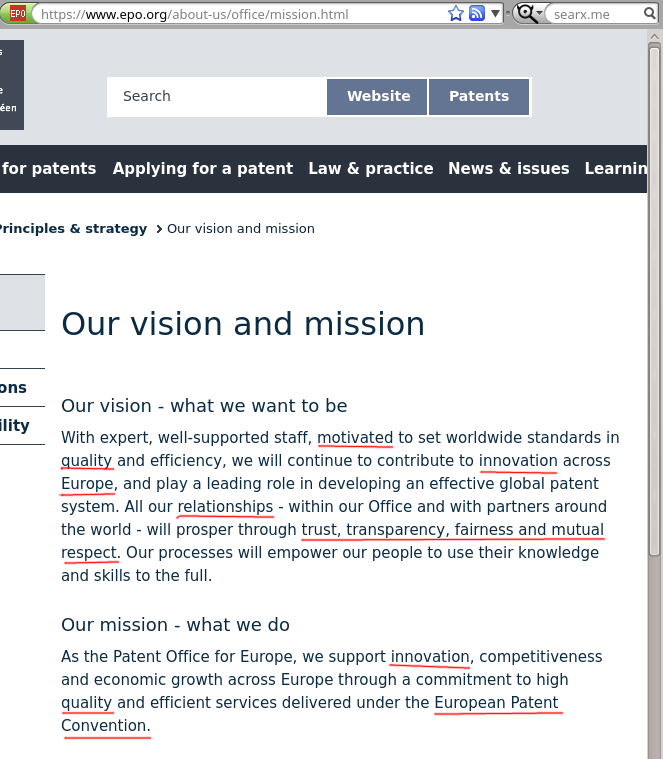

THE U.S. Patent and Trademark Office's (USPTO) relatively new Director strongly antagonises 35 U.S.C. €§ 101/Alice (SCOTUS decision from half a decade ago). He also opposes much of what the Patent Trial and Appeal Board (PTAB) is doing -- more or less the equivalent of Battistelli's attitude towards BoA. Meanwhile, EPO President António Campinos keeps pushing software patents in Europe in defiance of the EPC, in defiance of courts, and even in violation of directions from Parliament. So there's some commonality there and it's hardly surprising that Campinos can be seen with the Director of the USPTO more than he can be seen with any scientist.
"Like "AI" and "blockchain"? "4IR" and "Industry 4.0"? "IoT" and "ICT"? What other buzzwords for software patents? "CII" maybe?"What has the EPO become? Who does it work for? Yesterday it retweeted Siemens after it had bragged about patent numbers. "It is not a competition and many of these patents are bunk" was my response to them. The EPO later wrote: "As a patent office we are prepared to face the challenges brought by emerging digital technologies."
Like "AI" and "blockchain"? "4IR" and "Industry 4.0"? "IoT" and "ICT"? What other buzzwords for software patents? "CII" maybe?
The EPO just wishes to grant software patents against the law (it asks applicants to call them something else). Then it will find a way to make it sound like there's a 40% growth in patents. IAM, the propaganda arm of the EPO, has just published this piece from Carpmaels & Ransford LLP. It's promoting software patents not only in the EPO but also the UK-IPO (emphasis below is ours):
In the past, the UK Intellectual Property Office (UKIPO) has attempted to follow the EPO’s approach to software and business method-related inventions. However, the UKIPO is bound by the precedents set by UK courts. This can often result in disparity between what the EPO and UKIPO will allow.
Practice in the United Kingdom was defined in a UK Court of Appeal judgment in Fujitsu Limited’s application, which was an appeal against a decision to refuse an application relating to crystal modelling using a computer. The judge in this case confirmed that a criterion for patentability of subject matter that, on the face of it, falls within the statutory exclusions was that the claimed invention should provide a technical contribution in order to be patentable. Following Fujitsu in the United Kingdom and the IBM cases at the EPO, the UKIPO issued a practice notice stating that its practice towards software-related inventions would “remain in step with that of the European Patent Office”.
However, when the EPO moved to its inventiveness test following the Pension Benefits and Hitachi cases, the UKIPO continued to apply the technical contribution approach, as it had to follow the precedent established in Fujitsu. There was therefore a disparity in the way in which the UKIPO and EPO viewed the wording of the European Patent Convention.